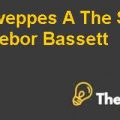
Design Project on Gender Differences to Risk Aversion Case Solution
Chapter 1: Introduction
It has been accepted by many people around the world that women are more risk averse as compared to men. This paper attempts to investigate this issue further and analyze the gender differences among the employees of one of the Nepali Bank. This paper identifies how the risk aversion process has taken place within women and how it is expected to happen.
There has been a lot of research conducted regarding the risk aversion of the people with regard to the gender differences and it has been found that women are more risk averse as compared to the men. Therefore, this area is still limited in its research to find out the way in which the risk aversion mechanism works within women and this paper is an attempt to extend the contribution to this important area of the literature.
Some of the mechanisms by which the risk aversion process within the women work is from the avoidance of the negative consequences related to the non-conformance to certain stereotypes, having strong feelings and emotional feelings with regard to losing something as compared to the strength of the emotional feelings of men, higher expectations of a loss or a negative outcome and lower perceptions of risk taking profits and enjoyment for taking certain risks(Bengtsson, 2005).
However, there are also many research studies, which did not find any differences in the level of the risk taking among both the sexes. Nonetheless, such differences and contradictions among the research studies are due to the fact that there are many contextual differences, which also have an impact upon the risk taking level of the people and when the people have to make a decision under certainty and a decision under uncertainty then in times of uncertainty the individuals have to take a decision based upon their own subjective expectancies in order to assess the likelihood of the occurrence of the outcomes(Chow, 2001).
On the other hand, when the individuals are asked to make a decision in times of certainty, then certain probabilities are also assigned on the basis of which the individuals can make certain decisions. Over here we now begin with the differences between the decisions which are made under certainty or risk and the decisions which are made under uncertainty.
When the decisions are made under certainty or risk then this indicates that probabilities could be easily assigned to the relative outcomes on the basis of the past experiences or other newly available information(Croson, 2009). One example is the toss of a fair coin. In other words there is a strong consensus about the probabilities of the outcomes and there is strong believe that the outcomes would occur with those specific probabilities.
On the other hand, when the decisions are made under uncertainty then the probabilities cannot be assigned and the decision maker has to make the final decision based upon certain subjective expectancies which he or she forms as a result of the prior experiences and any other information source which becomes available(Croson, 2009).
Thus, the makers of the decisions have different consensus regarding the probabilities related to the different events, for example the US winning the most of the most of the gold medals in the Olympics held in the year 2012. This difference is highly important because it tends to separate the decisions made in the time of risk into two separate categories.
The first category is the one in which the decision maker makes decisions in certainty by simply relying on the external cues and in this way they maximize the likelihood their outcomes and optimize them and the other category is the one in which the decision maker makes a decision under uncertainty. In addition to this, the decision needs to be made by the decision maker by simply optimizing the outcomes by relying on the internal assessments(Croson, 2009)...................
This is just a sample partial case solution. Please place the order on the website to order your own originally done case solution.











